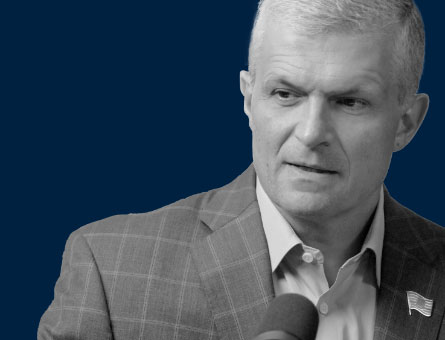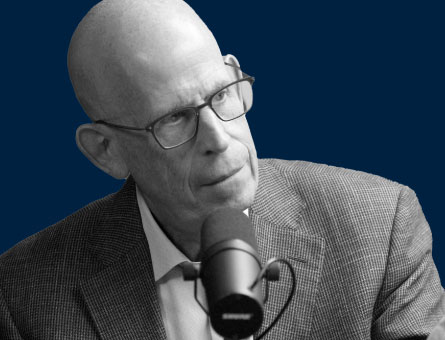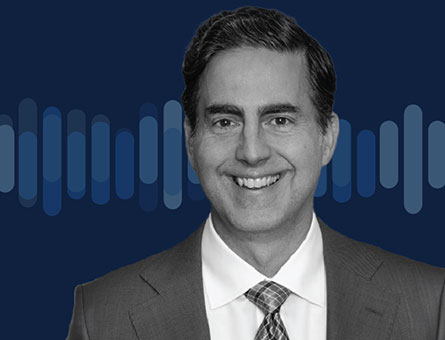Published 0, 0000 | 5 min read
Key Points
- Most potential players in the equity capital markets are holding fire and waiting for better demand-supply balance to deliver value.
- In the meantime, the gap left by a dearth of IPOs is being filled by alternatives, including convertible securities and equity margin loans.
- Less market activity means assets have grown larger. Continuation funds are increasingly allowing financial sponsors to hold assets while monetizing a part; for IPOs, more players are seeking cornerstone investors to add stability.
- Earlier meetings with potential investors have become the norm for IPOs, as in M&A, though the exercise can be too perfunctory.
Waiting for market equilibrium
Vito Sperduto: As we go into 2024, what kind of market are we expecting? What's available? And what signs are you looking for in terms of the IPO window?
John Kolz: The market is technically open, including the IPO market. Issuance statistics are up almost threefold from last year; some very big transactions have been done; overall volumes in the equity capital markets are up almost 20% for the year.
On the other hand, it is nowhere near historical volume levels. And the transactions that have come have been disappointing, in terms of aftermarket performance and returns for investors.
Most players are continuing to evaluate alternatives. That’s the pervasive view from venture capitalists, from private equity, from managements themselves. There are a lot of issuers and investors out there waiting, and we need to find the equilibrium.
Sperduto: Through 2021, we saw companies selling at incredibly high multiples. If we look at the tech IPO market as a barometer, I believe that multiples for tech companies that went public in ’21 were on average 15 times revenues — the only time it’s been higher was in the dotcom peak. Do you think that the folks looking to access the market now still have those valuation expectations?
Kolz: I think by and large, the new norm in valuation has settled in. Many companies got through this issuance and IPO desert by restructuring their own businesses, turning the corner and becoming profitable – so quite simply, they don’t need the IPO as much as they used to.
Biotech is the glaring outlier. It has had a very robust issuance volumes for this year and ’22. Most biotech companies need the money to finish their clinical trials, to run their businesses. Many of the tech companies who accounted for the vast majority of high-profile IPOs needed the money, and now they’re profitable.
It raises the stakes a little bit in terms of who has the leverage in negotiation on price, and whether you want or need to do something in the market.
“Many companies restructured their own businesses, turning the corner and becoming profitable – so they don’t need the IPO as much”
John Kolz, Global Co-Head of Equity Capital Markets, RBC
What might fill the IPO gap?
Larry Grafstein: The IPO market is the highest profile aspect of equity capital markets. But beyond IPOs, there are convertible securities, private placements, so-called ATMs, equity margin loans, the use of derivatives and options and even block trades. RBC led one of the biggest block trades in many years in any market recently, for Enbridge.
Kolz: I continue to be pleasantly surprised how these markets continue to evolve. I think that is healthy, a hallmark of the creativity that sometimes Wall Street does not get credit for.
Sometimes it is overblown. The SPAC market obviously went too far, too fast, but it was a mechanism to bridge a gap at the time. The convertible market is up dramatically this year. That is a perfect product to bridge a higher interest rate environment and a stock price that you don’t want to issue at today’s price.
Equity margin loans, call option overwrites, many other derivative technologies can help sellers of assets to squeeze a little more value out of their shares or equity margin loan. Those are filling in the gap for the lack of the more traditional products these days.
Big companies, small deals
Sperduto: In this environment, private assets have been held for around three quarters to a year longer on average than historically in portfolios. They’ve benefited from some growth that has produced some very chunky, quality assets.
Kolz: Companies of course are bigger, whether as a result of being a little later in their life cycle before IPO, or some of the other cross-currents. The average market cap of an IPO this year is $6.5 billion, compared to more like $4 billion for the last four or five years.
Sperduto: On the M&A side, over the last few years we’ve seen continuation funds used as a vehicle to allow sponsors to keep holding an asset, but monetize a portion. They’ve sold a percentage of an asset to another financial sponsor and maintained their ownership position. In those scenarios, I think they’ve worked really hard to maintain the existing capital structure, because it’s so advantageous relative to having to refinance.
Kolz: One of the complaints on the buy side right now is the deals are too small as a percentage of market cap. Most public market investors want bigger deals, with more liquidity, and a price that’s reflective of where that bigger size actually clears the market.
I think we will see another couple of things help to kickstart a reopening in 2024. Historically we would see mandatory convertibles or mandatory preferred stock alongside IPOs. It wasn’t used tremendously often, but it was one of those products that helped bridge the gap in size.
The other tactic that’s been used is the use of pre-IPO or cornerstone investors in IPOs, where you’ll launch a deal with much of it already spoken for.
Sperduto: Cornerstone investors started from the sell side perspective, as companies and banks looked to create a base of stability going into the offering. I imagine, with less product out there and institutional investors sitting on very large dollars, they are more readily trying to find opportunities to be a cornerstone.
Kolz: At the recent height of the IPO market, big tech companies in essence were running auctions, to see who could have the privilege of being their cornerstone investor. It should have been a signal that we had gone too far. I think we need to get back to an equilibrium, where you are finding investors who want to make a long-term bet in a partnership mentality with a management team.
“Private assets have been held longer – they’ve benefited from growth that has produced chunky, quality assets”
Vito Sperduto, Co-Head, Global M&A, RBC
Testing the waters more thoroughly
Sperduto: We’ve seen ‘early look meetings’ become more the norm when selling a business in the M&A context – trying to educate potential buyers who aren’t as familiar with the business, versus just going out with a full information memorandum.
Kolz: Testing the waters is absolutely the norm of any company approaching the public markets. It has to evolve to be more productive for both companies and investors, rather than a check-box exercise.
That’s one of the things I personally, and RBC, are trying to ensure we bring to the party: a process that allows you to approach the markets with more information, therefore less risk and less ability to get a price or size wrong. Also, to have a set of curated investors that fit with what the company wants to achieve. That’s everybody’s goal.
Outlook for ’24: better balance
Kolz: The IPO market in particular has been dominated by tech and healthcare. We now see representation from many more sectors on the horizon, whether that’s consumer retail or financials. We have had industrial resurgence in many different sub-verticals. Energy has come to the forefront in issuance volumes again.
People like me in equity capital markets talk as if the end investor is a software or a restaurant investor. The vast majority of investors are running funds that buy many different sub-sectors and would prefer to have more balance. That’s something we expect for ’24.
The ’22 and ’23 market does include some very big corporate IPOs – Kenvue from Johnson and Johnson, Mobileye from Intel. I do believe, though, that private equity leads the market reopening, and will dominate flows.
“The vast majority of investors are running funds that buy many different sub-sectors and would prefer to have more balance”
John Kolz, Global Co-Head of Equity Capital Markets, RBC


